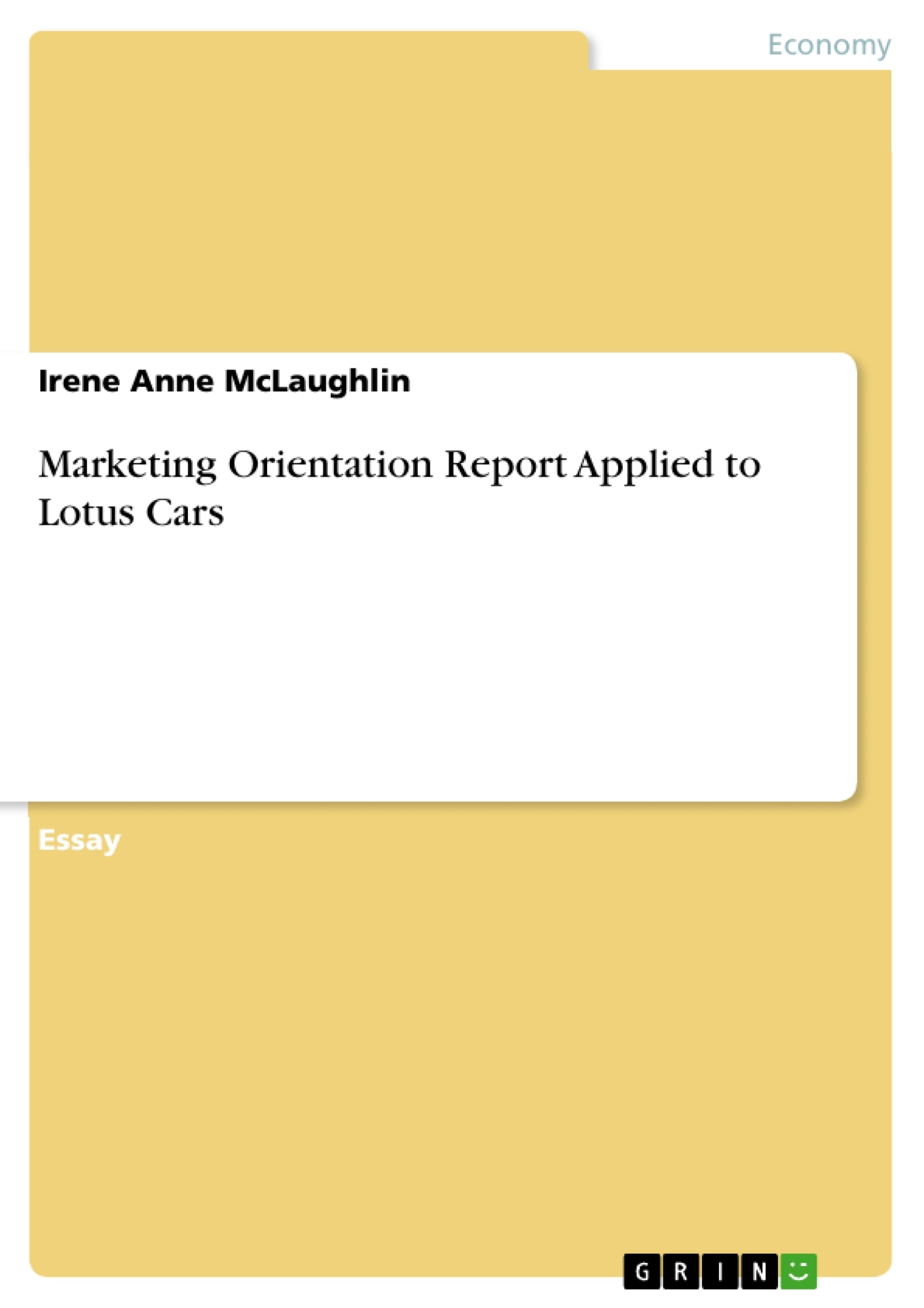Marketing Orientation theories appear to be everywhere and failing to deploy a marketing orientation approach for companies is somehow deemed a failure. This report will critically evaluate for Group Lotus PLC (Lotus) the benefits, advantages and disadvantages of marketing orientation, and provide recommendations considering whether this is in correlation with a marketing orientation approach.
Inhaltsverzeichnis (Table of Contents)
- Introduction
- Background of Lotus Cars
- Marketing Orientation
- Marketing Information Systems
- Segmentation
- Targeting
- Product Positioning, & Value Propositions
- Customer Value Satisfaction
- Branding
- Distribution
- Integrated Marketing Communications
- Measurement
- Advantages and Disadvantages of Marketing Orientation
- Recommendations
- Conclusions
Zielsetzung und Themenschwerpunkte (Objectives and Key Themes)
This report aims to critically evaluate the benefits, advantages, and disadvantages of marketing orientation for Group Lotus PLC (Lotus) and provide recommendations on whether this approach is in correlation with a marketing orientation strategy.
- The application and significance of marketing orientation in achieving business goals.
- The analysis of Lotus's current marketing practices and their alignment with a marketing-oriented approach.
- The identification and evaluation of key factors influencing Lotus's marketing performance.
- The development of recommendations for Lotus to enhance its marketing strategy and achieve greater success.
- The exploration of the advantages and disadvantages of implementing a marketing orientation framework.
Zusammenfassung der Kapitel (Chapter Summaries)
The report begins by defining marketing orientation and highlighting its significance in today's business environment. It then provides a brief background on Lotus Cars, exploring the company's history, its current market position, and its challenges in achieving market penetration.
The report delves into the concept of marketing orientation, examining various components like marketing information systems, segmentation, targeting, and customer value satisfaction. It also explores Lotus's shortcomings in these areas and how they can be addressed through a more effective marketing approach.
The report analyzes the potential advantages and disadvantages of adopting a marketing orientation strategy for Lotus. It explores the potential benefits of implementing this strategy, such as improved customer satisfaction, increased market share, and enhanced brand loyalty.
The report concludes by offering specific recommendations for Lotus to enhance its marketing orientation and achieve greater success in the automotive market.
Schlüsselwörter (Keywords)
The key focus topics of the report include marketing orientation, customer satisfaction, market penetration, brand power, product positioning, and the application of marketing principles within the automotive industry. Specific concepts explored include segmentation, targeting, branding, and the development of a cohesive marketing strategy for Lotus.
- Quote paper
- Irene Anne McLaughlin (Author), 2016, Marketing Orientation Report Applied to Lotus Cars, Munich, GRIN Verlag, https://www.grin.com/document/336028




